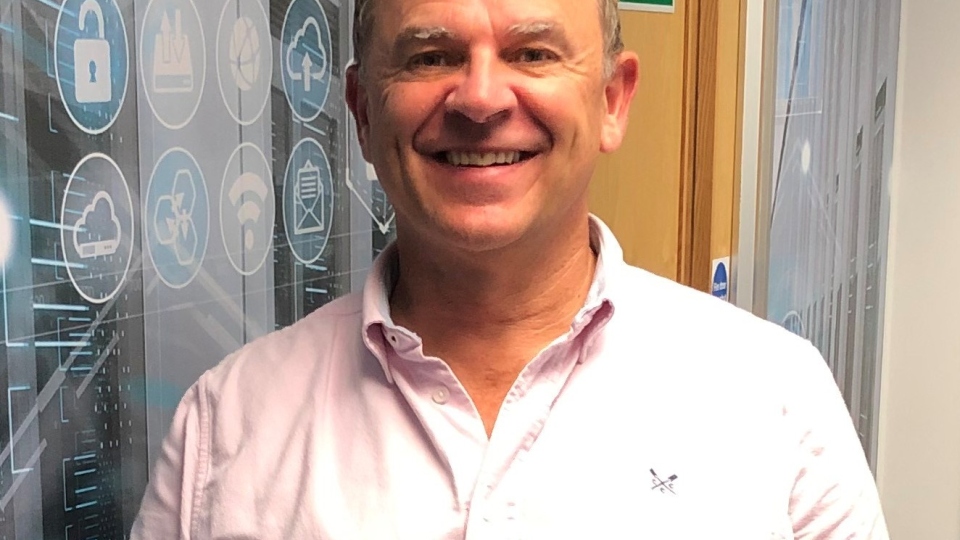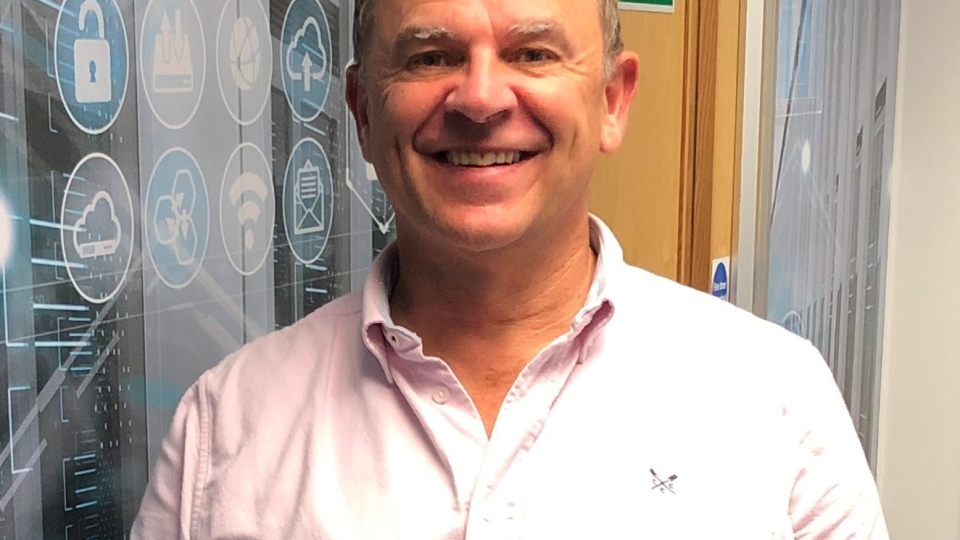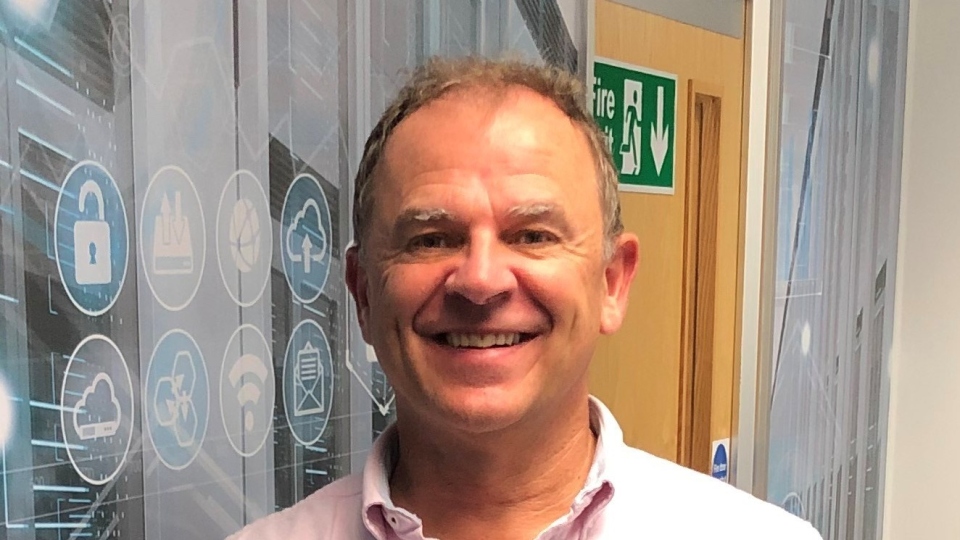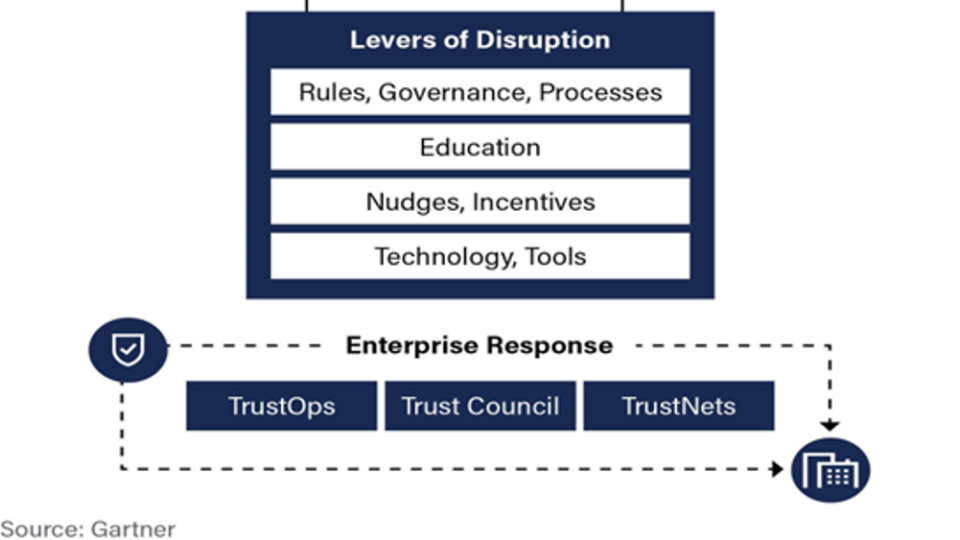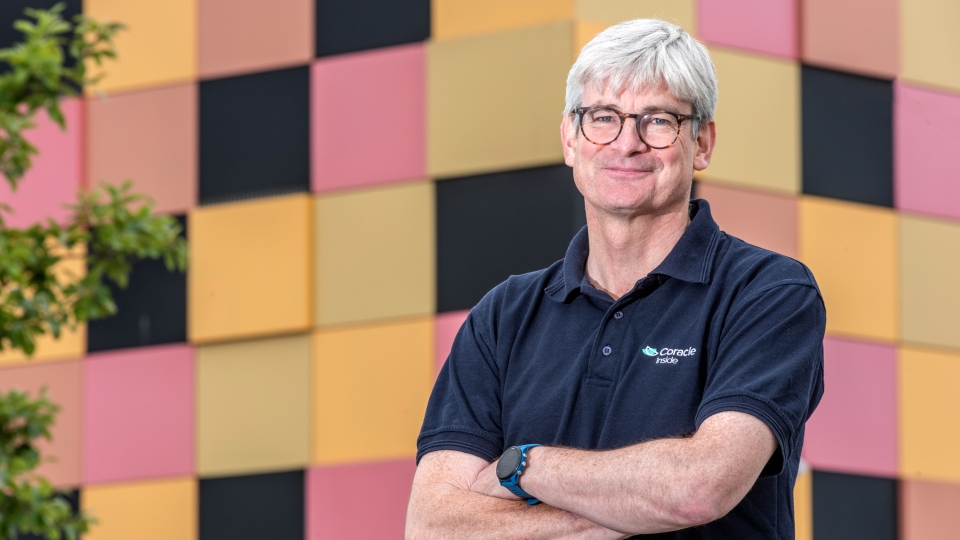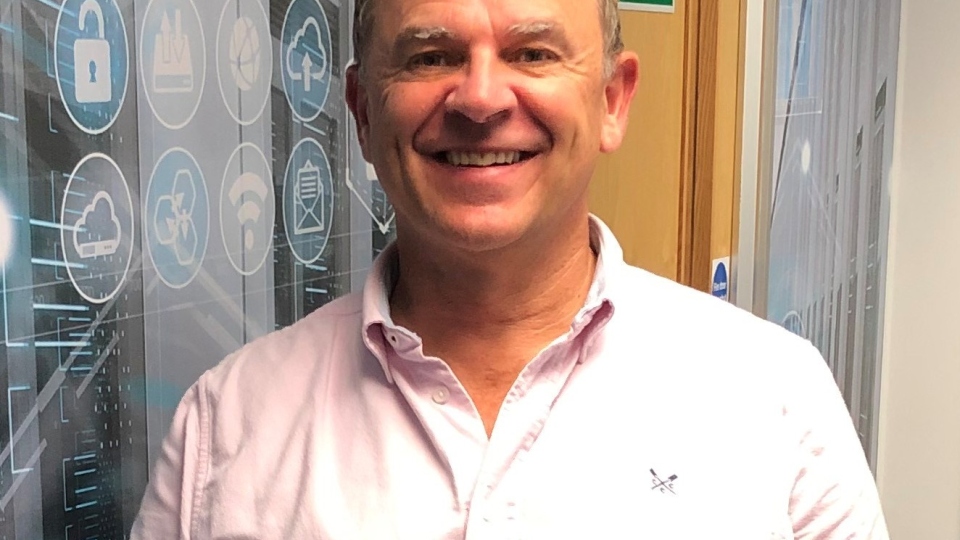
Technology-as-a-Service specialist IntraLAN, which recently unveiled a spruced up website redesign, is an integral part of the movement ushering in a new era of hybrid working that continues to transform the office experience. Here IT Europa Editor Carl Friedmann sits with CEO Andy Horn to discuss how having an open-door policy, even with a remote workforce, is vital to ensure trust and greater collaboration.
Can you briefly describe your priorities at IntraLAN and its unique place in the market?
My main task is to take IntraLAN from being an engineering-led business to becoming a sales-led business. When I joined, from the customer viewpoint, it was fantastic. Still, sales and marketing were the broken bits. We had very solid systems and processes in the back office so customers have always received a fantastic service level. Throughout the pandemic, our customer satisfaction has gone up. The service and customer focus makes us unique, and the culture within the business has a very strong customer focus. What I’ve also been driving is moving us more to the enterprise side due to changes to the market. The days when you had thousands based in a big HQ are gone, so where that lends itself to IntraLAN is that we can bend and flex as we understand the demands of a smaller company, and we can scale up. It’s much more difficult for people used to selling and supporting big offices, with thousands of people, trying to scale down. The geographical boundaries have shifted as well because of modern systems. You can achieve significantly more remotely when you don’t need to have an engineer within a 20-minute drive of a customer.
Was there always an element of remote working in place even before the pandemic hit?
There was, but we’ve certainly shifted the boundaries from being just a southeast UK operator to a national player.
What are your plans heading into 2022, and what are you able to build on considering the shifting nature of the industry?
That’s a perfectly timed question because I’ve just completed both a one-year and a five-year plan. I think given the experiences of the last 24 months, a five-year plan is a dust-gathering endeavour; we have no idea what’s coming down the street. But I’m very optimistic because there’s so much potential in the market in terms of technology. One of our customers, for instance, looks after forecourts for petrol stations and oil companies, and they’re worried given the current MSP model. So, we can add value by assessing how technology can impact their business and how it can generate more or alternative revenue streams for the forecourt of tomorrow. So as we move to EV, for example, there’s going to be a lot more information needed not just to supply power but to provide biometrics and update detail about how much power is used and who’s using it. Of course, we also need to provide the connectivity, infrastructure and services to support all that. There’s a lot of noise right now about IoT, but what does that actually mean and how does it impact the business? We’re evangelical about sharing with customers and removing the fear about what’s coming downstream. If we can arm them with more information about what’s coming, we can be a source of answers.
With your customer looking after forecourts, are the ones of today even going to resemble the ones of tomorrow at all?
I can only assume not; it’s an example of being made aware of technologies that could apply to that sector. It raises their awareness, and if they can grab it or source technologies that can give them an insight or an edge against their competitors, then we’ve achieved our mission. My job is to keep an eye on technologies around the world, and in the same way that our customer base has increased to nationwide from the southeast of England, we need to look at new technologies rather than just waiting for it to happen. We as a company have a responsibility to be on the front foot.
Going back to what you said about the viability of a five-year plan, is futureproofing even possible?
When I started in sales, we used to sell 10-year rental contracts on phone systems because it was futureproof technology. Who would do that today? You can’t futureproof, but we have to be the eyes and ears of emerging technologies and really understand our customers’ businesses, their drivers, what they’re trying to achieve and keep the momentum going. It’s not about just getting something new and thinking that’s done now. We need to keep evolving and working with them, while driving forward together. As soon as you stand still in this market, you’re moving backwards, and everything around Covid has accelerated the acceptance of technology. It’s gone from being a cost to an enabler to being a massive differentiator, but it’s still something that many people don’t do very well.
Is the organisational culture at IntraLAN changing as well in proportion to the overall sense of change?
It’s one of the things I set out to do because an engineering-led business can be very staid and process-driven; it’s not entrepreneurial or forward-looking. To me, you have to be that for your customers as well as for yourself.
And it’s a vital way to ensure you remain competitive too.
It’s not easy. One of the challenges I had when I joined IntraLAN is that there are new people and people who have been with us a very long time. People stay because it’s a great company, and what I didn’t want to do is throw that out and be just sales focused. It was a matter of moving to a sales culture without losing all the great stuff we’ve had before.
So it’s about incremental improvement rather than wholesale or abrupt change without alienating the core of the business.
Totally. You have to bring everyone on the journey with you.
Can you describe the timing and strategic move to partner with Xarios in September?
We’re trying to streamline the Unified Communications approach (UC), and they have a very strong platform with some good influence in the market that fits our target customer needs very well. There are so many players in that space, but Xarios are quietly building a great reputation, and looking at the customers and opportunities we have, it just seemed to be the perfect fit.
Do you see this as a fertile time and climate for more partnerships and M&A?
In addition to Xarios, we’ve brought in Zero Networks and a couple players in the security space because there’s clearly a need in the market for it. With M&A, we’re looking for organic as well as inorganic growth, and some companies are doing very well in the current climate. Sales have been difficult over the last couple of years, and companies we’ve looked at are generally lean in the back office. We’re looking to acquire businesses as well. It’s a very hot market because people are calling me looking to buy, but we’re out looking to acquire too. There’s a lot of market consolidation going on.
Considering how unpredictable business has become, from remote working to investment and forecasting, what lessons have you learned that further clarify your approach to leadership?
Always communicate. I spent years in the Navy, and you have to do every job on a ship in order to command. It’s the same in business. You have to understand the challenges that everybody has. I’m lucky enough to live in a house, for instance, and some staff are in flats. So they were working from home, sitting at their desk all day in confined spaces and feeling guilty about leaving, so there’s a real mental health issue. In response, we started opening up offices to get people away into a different environment. We always need to look internally and externally, keeping an eye on our staff to ensure they’re looked after. And if they’re happy, they’ll look after our customers as well. With flexibility, we worked with a number of our clients throughout the pandemic, where they needed and valued support and loyalty. Getting the messages out into the market and an awareness of what’s going on is vital.
Building on the ship metaphor, it’s good to have people nearby to have quick face-to-face conversations, but when people suddenly scattered to work remotely, it was difficult for organisations to maintain cohesion and the right amount of engagement without micromanaging. Is that something you’ve experienced?
At first, working from home was a novelty. It became more serious, and then people got a little too relaxed, and for some their productivity dropped. In response, we had to start looking at micromanagement, which wasn’t necessarily the right way to approach it. Still, we had to develop a new set of KPIs. How you manage people remotely isn’t necessarily how you manage them in the office, but it’s key to get a fun element in there as well. One of the challenges was getting people to stop work, to take a break and go for a walk or take lunch. I’m guilty of that as well. If you look at the typical home, with a domestic broadband line intended for a few hours of use a day, you suddenly had parents working and the kids on it, as well doing Zoom calls. All of it done on a typically unsecured, un-firewalled environment, breaking every policy procedure the company had carefully put in place. In theory, they could be subject to dismissal. There’s a massive issue about security, so we’re trying to get a decent amount of broadband with solutions to provide access to the VPN and a secure environment. We also recommend putting in separate business broadband lines that you could expense to the business, so we’ll take responsibility for the billing. That’s an example of how we deliberately tried to tailor solutions for people in that situation.
Are things levelling out in terms of hybrid working or does uncertainty still prevail?
There’s a lot of lessons learned and trust being built. Many employers were against working from home, and I’m a firm believer that you have to trust your staff. I’m not sure of the next corner but I’m going into the office one day a week and find my productivity higher. We’ll always need face-to-face contact and building that rapport with people. That’s where it’s harder for our larger partners and customers, particularly because they’re all about relationships, and these can’t be replicated online. You need to see body language and inferences.
And has there been a greater emphasis about trust within the organisation at IntraLAN and ensuring you have a cohesive and trustworthy team around you?
Fortunately, because we sell services like disaster recovery and backup, we had a model in place before the pandemic, but we continued where we could in bubbles, maybe three or four people in the office at a time. The leadership team goes in once a week, and we’re getting more bubbles because people like it. A lot of productivity is achieved around the coffee machine, and the ideas and innovation from those conversations is something that’s been missing.
During a Zoom call, it’s very focused and directed to achieve the objectives of the meeting, but you don’t have the side discussions where a lot of the creative thinking can come from.
Can you distil how being at IntraLAN has enabled a sense of fulfilment or a sense of greater purpose?
For me, IntraLAN wasn’t fulfilling its potential. It’s a fantastic company with an excellent service reputation, but there’s so much more to it. I don’t think they realise how good they are, so taking them on that journey from my perspective up in the crow’s nest, and instilling the trust to join me in a direction I think was the right one, was very rewarding. We need to set and achieve milestones, so that’s why I get back to communication and say it’s important we’re on this journey together, and we’ve gotten to a place we said we’d reach.
When I joined, I did anonymous One-on-Ones with everyone, rather than barging in and telling everyone what was going wrong and how to fix it. My 30- and 90-day plans were driven by the good and the bad as told to me. I then fed back to them what I considered the best way forward was. That seemed to be a welcome approach. The staff liked it because they hadn’t had this type of approach before. Because the company was engineering-led, communication wasn’t a big thing, so I’d stand up and tell them what was going on, whether it was about a good sale, good feedback about an engineer or rebranding the website. I’ve worked in some huge companies, so I’m also trying to introduce the rigour you need to scale a business, similar to what you typically get from a corporate, but you don’t always see in the early stages. So it’s about taking the best bits from one and bringing them into another.
